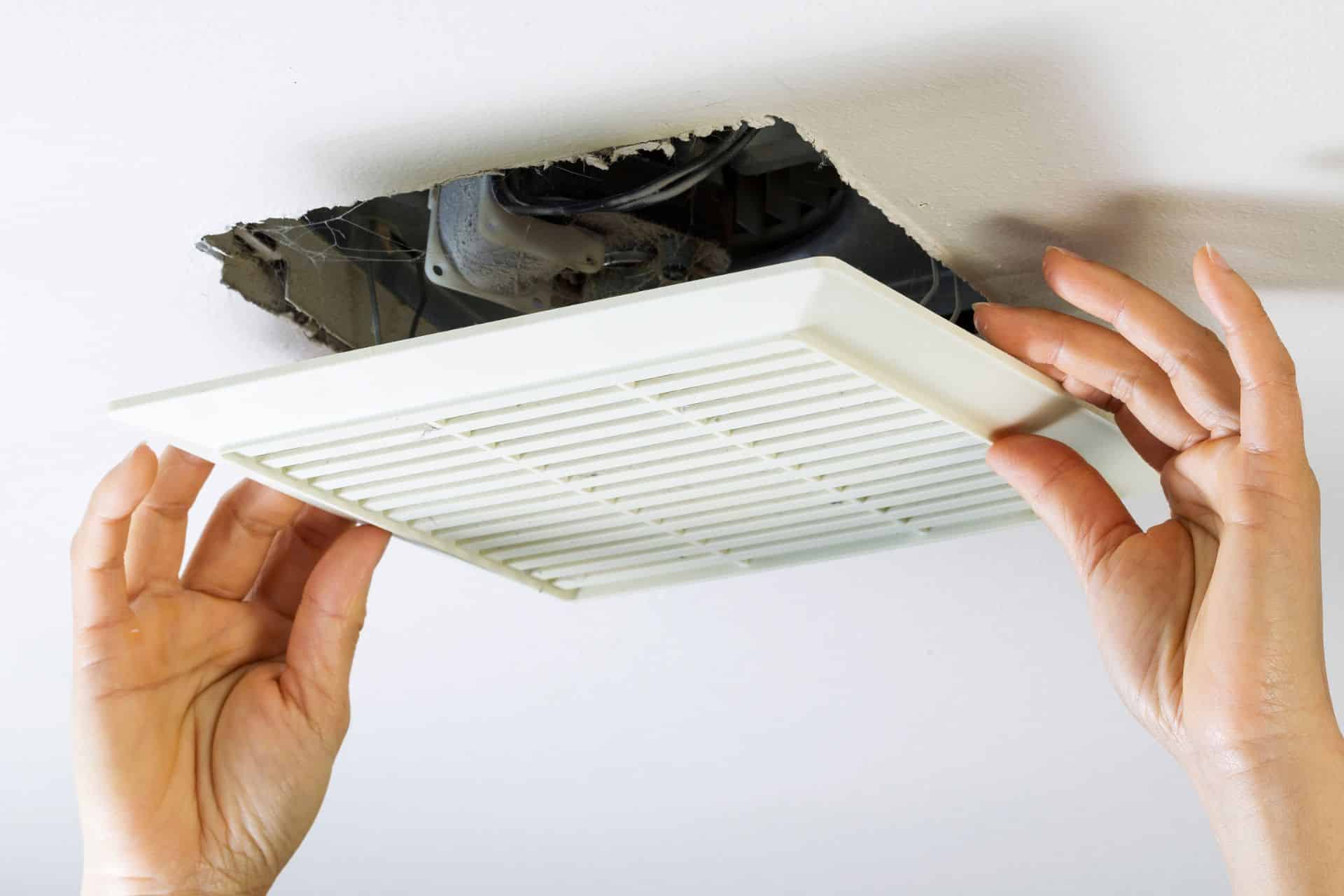Fan Noise Assessment: Bathroom Vent Fan Wind Noise

Bathroom vent fan wind noise – Bathroom vent fans, while essential for maintaining a healthy and comfortable indoor environment, can sometimes generate excessive wind noise that can be both annoying and disruptive. Understanding the causes of this noise and implementing effective troubleshooting measures can help you restore peace and quiet to your bathroom.
Hei sobat, pernah ngerasa terganggu sama suara bising kipas angin kamar mandi? Tenang, ada solusinya! Sekarang udah ada mini ceiling fans for bathrooms yang bisa bikin sirkulasi udara lancar tanpa suara berisik. Tapi ingat, jangan lupa bersihin kipas anginnya secara teratur biar tetap awet dan nggak bikin kamar mandi bau apek.
The excessive wind noise in bathroom vent fans can be attributed to several factors, including:
- Obstructed Airflow: Blocked or clogged air vents, ducts, or fan grilles can restrict airflow, causing the fan to work harder and generate more noise.
- Loose Components: Screws, bolts, or other components that have become loose can vibrate and produce noise when the fan is in operation.
- Inadequate Ducting: Undersized or improperly installed ducting can create airflow resistance, leading to increased noise levels.
- Fan Motor Issues: Worn or damaged fan motors can generate excessive noise due to friction or imbalance.
To troubleshoot and resolve common noise issues, consider the following tips:
- Inspect Airflow: Check for any obstructions or blockages in the air vents, ducts, or fan grilles. Remove any debris or obstacles to ensure unobstructed airflow.
- Tighten Loose Components: Use a screwdriver or wrench to tighten any loose screws, bolts, or other components that may be causing vibrations and noise.
- Check Ducting: Ensure that the ducting is properly sized and installed. If the ducting is undersized or improperly connected, consider replacing or adjusting it.
- Examine Fan Motor: If the noise persists despite addressing the previous issues, it may indicate a problem with the fan motor. Contact a qualified electrician or HVAC technician for further inspection and repair.
Noise Reduction Strategies

Bathroom vent fans can generate wind noise, which can be annoying. To reduce this noise, there are several effective methods available, each with its own advantages and disadvantages.
One common method is to install a silencer, which is a device that absorbs sound waves and reduces their intensity. Silencers are typically made of sound-absorbing materials such as fiberglass or foam, and they can be installed in the ductwork of the vent fan.
Another method is to install a damper, which is a device that restricts the airflow through the vent fan. Dampers can be manually or automatically operated, and they can be used to reduce the amount of wind noise that is generated.
Fan Selection and Installation

Bathroom vent fans are essential for removing moisture and odors, but they can also be a source of noise. Here are some tips for selecting and installing a bathroom vent fan to minimize noise:
Fan Selection
When selecting a bathroom vent fan, it is important to consider the noise level and airflow requirements.
- Noise level: The noise level of a bathroom vent fan is measured in sones. The lower the sone rating, the quieter the fan.
- Airflow requirements: The airflow requirements of a bathroom vent fan are measured in cubic feet per minute (CFM). The CFM required for a bathroom vent fan will depend on the size of the bathroom and the number of people who use it.
Fan Installation, Bathroom vent fan wind noise
Once you have selected a bathroom vent fan, it is important to install it properly to minimize noise.
- Install the fan in a central location: This will help to distribute the noise evenly throughout the bathroom.
- Mount the fan on a vibration-isolating pad: This will help to reduce noise and vibration.
- Use a flexible duct: This will help to reduce noise and vibration from the ductwork.
- Seal all gaps around the fan and ductwork: This will help to prevent noise from leaking out.
The whirring of the bathroom vent fan can be a real nuisance, but there’s a way to make it a little more bearable. Just imagine your favorite gengar wallpaper gently swaying in the breeze, and the sound of the fan will instantly become a soothing lullaby.
Plus, you’ll have the added bonus of a stylish and spooky bathroom decor.